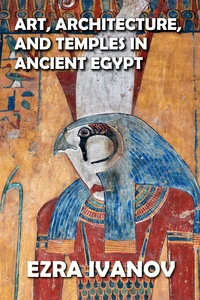Around 2200 BC, the court stopped building monuments after half a millennium. In the meantime, the royal house, which was responsible for constructing these monuments, vanished entirely. A king or a court could never construct a sizable stone monument for the next century and a half, despite the kingdom's access to a river, copper, and wheat crop. In southern Sinai, a long line of royal inscriptions commemorating courtly expeditions to obtain copper abruptly ends.
Only the dates of the monument-making kings who ruled on either side can determine the length of the following interregnum, as traditional histories blink, stutter, and stop after the reign of Pepi II. During the same blank period, they smashed the sarcophagi lids of the Memphite pyramids, slid them aside, and removed the royal corpses. They partially destroyed the nobles' tombs and left their burial shafts open, allowing bats and owls to evade them.
The attacks also targeted temple statues and tomb chapels belonging to the noble class. These attacks have left ancient royal temples with surprising quantities of their original contents, including richly decorated ritual equipment, valuable copper fittings, and even fragile papyrus records. Despite the sacked burial and the buried entrance to the pyramid under rubble, Wenis' Pyramid Texts remained perfectly preserved.
Around 2200 BC, the court stopped building monuments after half a millennium. In the meantime, the royal house, which was responsible for constructing these monuments, vanished entirely. A king or a court could never construct a sizable stone monument for the next century and a half, despite the kingdom's access to a river, copper, and wheat crop. In southern Sinai, a long line of royal inscriptions commemorating courtly expeditions to obtain copper abruptly ends.
Only the dates of the monument-making kings who ruled on either side can determine the length of the following interregnum, as traditional histories blink, stutter, and stop after the reign of Pepi II. During the same blank period, they smashed the sarcophagi lids of the Memphite pyramids, slid them aside, and removed the royal corpses. They partially destroyed the nobles' tombs and left their burial shafts open, allowing bats and owls to evade them.
The attacks also targeted temple statues and tomb chapels belonging to the noble class. These attacks have left ancient royal temples with surprising quantities of their original contents, including richly decorated ritual equipment, valuable copper fittings, and even fragile papyrus records. Despite the sacked burial and the buried entrance to the pyramid under rubble, Wenis' Pyramid Texts remained perfectly preserved.

 , qui est-ce ?
, qui est-ce ?